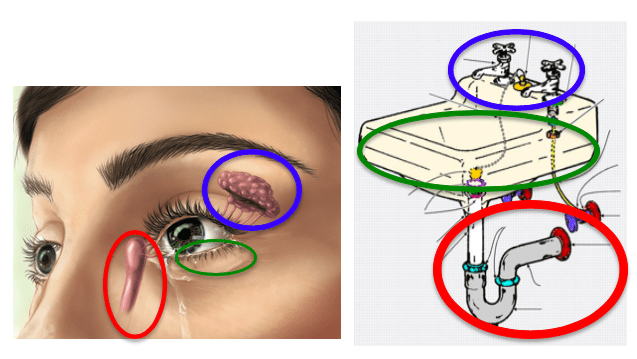Excessive tearing
In ophthalmology, we refer to excessive tearing as “epiphora.” This condition can result from three main etiologies. I like to describe the human tearing system as a faucet-sink-drain analogy.

When the eye is dry, the lacrimal gland (circled in blue) is over-stimulated and responds by producing an increased tear volume. This is a reflex that can be controlled with adequate lubrication of the eye with artificial tears and ointment. If the lower lids (“sink” circled in blue) are loose (as discussed above), they cannot “catch” the tears and the tear pump mechanism mediated through each blink is weakened. By tightening the lower lids with a lateral tarsal strip or canthopexy, the tears are more efficiently directed into the drainage entry sites located within each eyelid.
Lastly, an obstruction of the nasolacrimal drainage system (circled in red) of the eye can lead to reflux of tears. The entry to the tear duct, the lacrimal punctum, can be enlarged through a simple 3-snip punctoplasty. For further downstream blockage, a dacryocystorhinostomy (DCR) creates a new passageway through the lacrimal sac fossa that effectively bypasses the scarred / blocked portion of the nasolacrimal duct through which tears drain. A temporary silicone stent is placed through the lids and this newly created opening. The stent is removed after three months, resulting in improved tearing.









Schedule a Consultation: 972-EYE-LIDS (393-5437)